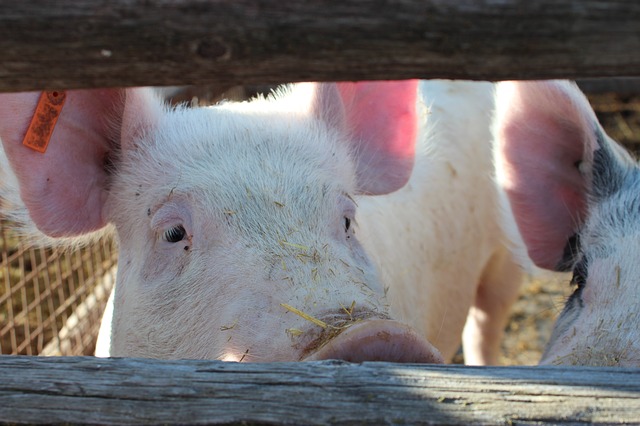 Epilepsy is a disease that affects 2.3 million adults and approximately 467,711 children in the U.S. In the epileptic’s brain, certain nerve cells send out erratic signals that cause the person’s body to seize for a few seconds or a few minutes. Whether or not you know someone with epilepsy, November is National Epilepsy Month and a good time to learn seven facts about this condition.
Epilepsy is a disease that affects 2.3 million adults and approximately 467,711 children in the U.S. In the epileptic’s brain, certain nerve cells send out erratic signals that cause the person’s body to seize for a few seconds or a few minutes. Whether or not you know someone with epilepsy, November is National Epilepsy Month and a good time to learn seven facts about this condition.
1. What Causes Epilepsy?
Doctors can’t identify the cause of almost two-thirds of known epilepsy cases. However, genetics often plays a role. Other causes include oxygen deprivation during childbirth, stroke and brain infections, traumas, injuries or tumors.
2. How is Epilepsy Diagnosed?
Doctors review a patient’s medical history and examine the results of a full neurological exam, EEG and CT or MRI.
3. What Epilepsy Treatments are Available?
Most insurance pays for medication that controls many epileptic seizures. Doctors prescribe specific medications based on the seizures’ type, severity and frequency. Patients may also benefit from brain surgery, nerve stimulation and a ketogenic diet that’s high in fat and low in carbs.
4. How Many Types of Seizures are There?
While seizures can vary from mild to severe, they’re typically separated into two groups. Primary generalized seizures start in and involve both sides of the brain. Partial seizures start in one side of the brain and spread to the entire brain.
5. Can an Observer Tell When Someone is Experiencing a Seizure?
Petit mal seizures are small and the sufferer will only blink fast or stare into space for a few seconds. Complex partial seizures cause a person to be confused, dazed and unable to respond for several minutes. A person, who falls down, loses consciousness or experiences muscle jerks is experiencing grand mal seizures.
6. How Can You Help Someone During a Seizure?
If you see someone having a seizure, don’t restrain the person. Loosen his or her shirt collar, and remove nearby sharp objects. Roll the person to his or her side after the seizure ends, and remain close by.
7. Is Epilepsy Fatal?
Fortunately, many epileptic people live full lives. Patients who die often suffer other health conditions like strokes or tumors or suffer fatal injuries during a seizure. Prolonged seizures or suddenly stopping medication can also cause death.
Have these facts taught you something new about epilepsy? Learn as much as you can during National Epilepsy Month and be prepared to assist the epileptics you know.
Read more
 Americans are taking to the outdoors in record numbers this summer, mostly because of COVID-19 indoor restrictions and the cancellation of organized sports.
Americans are taking to the outdoors in record numbers this summer, mostly because of COVID-19 indoor restrictions and the cancellation of organized sports.
So, this summer you and/or your family and friends may be hauling a trailer. It secures your ATV, boat, a second car, camper, horses or camping gear. Before you hit the road, make sure your trailer is properly insured.
Why do you Need Trailer Insurance?
Many states accept your auto insurance coverage when you haul a trailer behind your insured vehicle. Your homeowners or renters insurance policy may cover the items you haul. However, this coverage is typically only for liability. Plus, you face several risks when you haul your trailer on the road.
- If you’re not used to hauling a trailer, your risk of causing an accident increases.
- You may turn too sharply and damage someone’s property.
- You could hit a slippery stretch of highway that causes your trailer to slide into another vehicle and damage it or push it off the road.
- While unloading or loading your trailer, you could damage it or the item you’re hauling.
These and other accidents are possible. Trailer insurance adds valuable protection that gives you peace of mind as you travel.
What Type of Coverage is Available?
The type and amount of trailer insurance you need depends on your trailer’s type and size and on the value of the items you will haul. Typical trailer insurance provides several valuable coverages.
- Liability – Cover the costs associated with bodily injuries or property damages your trailer causes to other people or their property and belongings.
- Comprehensive – Repair your trailer if it is damaged from theft, vandalism, fire or weather.
- Collision – Repair your trailer if it is damaged during a traffic collision.
- Contents Coverage – Pay to replace damaged items that are stored on or hauled in your trailer.
How do you Purchase Trailer Insurance?
Talk to your auto insurance agent about trailer insurance. He or she will review your auto insurance policy’s current types of coverage and limits to ensure it’s adequate for your trailer. Your agent will also review your homeowners or renters insurance policy and ensure it covers the items you are hauling.
If your current policies are not adequate to cover your trailer and its contents, increase your coverage types or limits or purchase a separate policy. You may need to shop around for trailer insurance if your current agent does not carry it.
With trailer insurance, you can travel this summer with confidence. If your trailer causes property damage or bodily injury or if the items you haul are damaged, you can pay for the liability or repairs. Talk to your agent before your next trip to make sure you’re properly covered.
Read more

It is obvious that farming can be a dangerous profession, but those working in the commercial hog farming business are exposed to particularly hazardous situations on a daily basis. As a hog farm employer, you need to continually analyze your risks to keep your business afloat. These risks not only include the health and safety of your employees, but also the physical condition of your product, which is crucial to maximizing your profits.
Keep Your Hogs Healthy and Profitable
One of the biggest risks when farming any type of animal commercially is ensuring they stay healthy so you can stay in business. Efficient operations increase profitability by reducing the spread of disease and integrating operations; however, small operations can also turn a profit by specializing in a single stage, keeping hogs healthy and raising them humanely.
As an employer, you must understand the nature of your exposures and exactly how they happen in order to prevent them from occurring at your facility.
Depending on what kind of business you run—whether it is farrow-to-finish, growing, wean-to-finish, breeding, large or family-run—your risks will change. Most of these hazards you are already aware of and take protective measures to prevent, but there are a few common sources of loss that may be overlooked.
Minimize transport loss. A recent Iowa State University study looked at more than 2 million hogs and found that more than 17,000 of them had the potential for reduced value at the processing plant because of carelessness during the transporting process. The National Hog Farmer reports loss averages as high as 2.4 percent per trailer load transported to slaughter plants in the United States over the past seven years.
While this loss might seem negligible, it could accumulate into thousands of dollars in lost business and make a huge difference in a tough market. Consider training your truck drivers and loading crews more thoroughly to emphasize gentleness of starts and stops and proper handling in the sorting, moving and loading process. Also, ensure that your trailers maintain an acceptable temperature and have suitable ventilation even when the vehicle is stopped.
Emphasize disease control. Improperly managed manure removal systems could cost you money in the form of dwindling health of your hogs. Manure buildup in barns holds the possibility for disease, especially Escherichia coli (E. coli), which is particularly fatal in piglets.
Maintain good hygiene and proper temperature control in farrowing crates to lower your mortality rate and increase productivity and profit. In addition, better hygiene leads to healthier hogs, and healthier hogs gain weight more quickly and easily than those exposed to manure buildup and noxious odor. You might consider looking into technological innovations in hog waste and lagoon management systems to help. Between 5 and 10 percent of U.S. hogs are removed from the industry every year because of death and disease, so it is important to stay ahead of your competition by implementing good, healthy practices.
Avoid unsound contracts. Farming is a dangerous occupation, and it is also an unpredictable one. If you depend on outside resources for corn, soybeans, water and medications, make sure these inputs will always be available. Feed inputs can suddenly be in short supply because of bad weather or because of competition from other non-feed harvests. Enter into solid business contracts with these providers to guarantee plenty of supplies for your anticipated number of pigs and hogs.
Keep Your Employees Healthy and Productive
Just as keeping your hogs and pigs healthy is crucial to your business, ensuring your employees are able to work and that they are in a good environment will also help you stay in business and turn a better profit. There are three major employee health concerns specific to the hog farming industry that you should work to avoid or minimize:
Respiratory problems.
According to the University of Iowa’s College of Public Health, one quarter of those working at hog farms have one or more documented respiratory problems. The most common are chronic bronchitis and asthma-like wheezing, which could both be caused by dust, endotoxin and/or ammonia exposure.
Professors at Iowa’s College of Public Health suggest using an extra one percent of oil or fat in the hogs’ diet and reducing the distance between feed drops and feeders to reduce the amount of dust in the air from feed, microbes, dried manure and pig skin cells. Require your employees to use the proper respirators if they will be working more than two hours per day in the barn.
Manure gas exposure.
Manure pits more than three feet deep that are agitated after a long period at rest release hydrogen sulfide gas, which is extremely dangerous. Consider enacting a policy that requires employees to exit the building during agitation and for the 30 minutes following in addition to requiring the appropriate personal protective equipment (PPE).
Also, it is important to empty the pit three or four times per year to reduce the amount of gas buildup. Another option is to raise the pH of the manure to keep gas from escaping the pit and potentially harming employees.
Accidental needlesticks.
ese types of incidents are far more common than expected, and the injection of chemicals meant for animals can be exceptionally dangerous to humans. Accidental needlesticks can result in several types of injuries, including inflammation, infection and hyperimmune responses. Needlesticks involving reproductive hormones can be even more hazardous for female employees, causing hormone imbalance and even miscarriages.
Instruct employees to practice caution when removing needle caps and disposing needles. Keep the proper material data safety sheets (MSDS) on file in case of a needlestick, and do not force female workers to work with hog reproductive hormones if they feel uncomfortable.
Remember that in addition to these hazards, general farming industry dangers also are present. Examples of farming risks you should bring up with employees are proper animal handling, hearing protection, proper machinery and equipment use, repetitive motion hazards, safe lifting techniques and protection against slips, trips and falls.
Be Kind to Your Neighbors
Hog farms garner lots of media attention, especially in Iowa and North Carolina, where the industry is largest. However, not all of the publicity is positive. There is growing concern among scientists that hog farm odor and byproducts could be hazardous to the environment and to people living near large operations. There have been several lawsuits recently involving neighbors of large hog farms who claim the byproducts are negatively affecting their health. Legal issues can be financially draining and negatively affect your business both at a profit level and in terms of reputation.
While there is limited evidence supporting residents’ claims that hydrogen sulfide gas omitted by large hog farms leads to serious neurological damage of people living nearby, it does not hurt to be cautious. Avoid the increasingly more common practice of spraying liquid manure into the air when the chemical levels in collection pools get too high. Regularly test the air in and around your facility for hydrogen sulfide and ammonia concentrations—the recommended standards vary by state, but they are generally around 15 parts per billion and 150 parts per billion, respectively.
In general, comply with the Occupational Health and Safety Administration’s (OSHA) standards of hazard control. Also, take additional care when disposing of chemicals and waste, and always keep the risk of litigation top-of-mind.
If you have additional questions about your exposures as a hog farm employer, contact Scurich Insurance at 831-661-5697.
Read more

Just a few years ago, taking a trip involved contacting travel agencies, booking hotel rooms and making plans far in advance. Today, however, smartphones and the internet have helped create new sharing services that allow homeowners to connect with travelers and rent out their homes, spare bedrooms or other accommodations for a fee.
Airbnb, the most popular of these sharing services, offers a convenient platform that can provide homeowners with an extra source of income. However, renting through Airbnb can also expose you to substantial risks and leave you with costly property damage and liability claims.
Potential Insurance Gaps
Relying strictly on your regular homeowners or renters insurance policy while hosting guests through Airbnb can lead to significant gaps in coverage. These policies are designed to protect you and your family from everyday risks, and not from commercial renting.
If a renter uses your home for even a small amount of time, you and your family will be exposed to significantly different risks that weren’t considered when your policy was drafted. As a result, most homeowners and renters policies won’t cover property damage that’s caused by Airbnb guests.
If you’re considering renting through Airbnb, your first step should be to contact your insurance broker to review your current homeowners or renters insurance policy. While your homeowners or renters policy may allow you to rent your property to a guest, it’s important to keep in mind that each insurer has its own restrictions and requirements. Some insurers may require advanced notice of any short-term rental, whereas others might insist that you purchase an endorsement to expand your coverage.
If you plan to rent out your residence on a regular basis, many insurance companies will consider this commercial use. In many cases, regular Airbnb hosts will need to obtain a commercial insurance policy in order to be properly insured. However, a growing number of insurance companies now offer home-sharing liability insurance policies that can be purchased on a month-to-month basis.
Issues with Airbnb’s Provided Protection
Airbnb does offer its hosts two forms of protection through its host guarantee program and host protection insurance. While hosts may be inclined to rely exclusively on these programs to manage their risks, there are significant gaps related to these offerings.
Host Guarantee
Airbnb backs every one of its bookings with its host guarantee program at no cost, which will reimburse eligible hosts for damages up to $1 million. However, Airbnb readily admits that its host guarantee is not insurance and should not be considered a replacement or stand-in for homeowners or renters policies.
Moreover, payments through the host guarantee are subject to a lengthy list of terms, conditions and exclusions. Therefore, hosts should be aware of the following issues related to Airbnb’s host guarantee:
- Hosts must attempt to resolve any issues with the guests involved prior to receiving any compensation. This also means that a host would have to make a claim on his or her own insurance policy before the host guarantee would apply.
- Any sum collected from a standard policy or a security deposit would be deducted from the host guarantee.
- The guarantee will only repair or replace covered property that is damaged during the time frame of an online booking.
- This guarantee does not cover certain items including, but not limited to, cash, collectibles, jewelry, pets, watercrafts or any damage to property that is not considered a covered accommodation.
For more information on specific elements of Airbnb’s host guarantee program, hosts can review its terms and conditions in full on the company’s website.
Host Protection Insurance
In addition to its host guarantee program, Airbnb offers coverage to its patrons through its host protection insurance. Airbnb indicates that the program provides primary liability coverage for up to $1 million per occurrence in the event of third-party claims of bodily injury or property damage. Despite these claims, hosts should be wary of relying solely on this insurance program for a number of reasons:
- Intentional acts that aren’t the result of an accident are not covered under this policy. In addition, Airbnb’s home protection insurance does not cover what it refers to as property issues, which can include things like mold, asbestos and bedbugs.
- Neither Airbnb’s home protection insurance nor its fine print is readily available for review. The policy is also subject to limitations, conditions and exclusions. Together, this means that the specifics of these coverages are vague, and Airbnb hosts may not know exactly what’s protected.
- The personal property of any guest is generally not covered. Additionally, any theft or damage caused by a guest may not be covered either.
With Airbnb’s host protection insurance, it’s best to assume that you aren’t equipped with the proper coverage. For full protection, it is likely that you will need to speak with an insurance professional to better understand the policy adjustments you will need in order to be fully covered.
Considerations for Condo Owners and Renters
While Airbnb opens its services to condo owners and renters, multi-unit buildings often have restrictive bylaws, homeowner association rules or lease terms that could impact the ability to host guests through Airbnb.
In many instances, commercial activities like renting out accommodations—even for short periods of time—are forbidden by lease or condo board policies. In some cases, hosts will need to contact their landlord or condo board before subletting or renting out any accommodations. Failure to do this can result in eviction or other forms of legal action.
Even if you’re allowed to rent out your condo or apartment through Airbnb, doing so can cause tension with neighbors. There’s always the potential that your guests may not be respectful to property in common areas, act inappropriately or noisily, or make other tenants feel uncomfortable.
Local Laws and Considerations
In response to the rising popularity of Airbnb, many states, cities and towns are moving to regulate short-term property rentals through their municipal codes or zoning regulations. In some cases, home rental services like Airbnb could be prohibited altogether.
If you break these local regulations, purposely or otherwise, you could face thousands of dollars in fines. What’s more, Airbnb says alignment with laws and regulations is the responsibility of those renting out accommodations. As a result, you need to review your local laws and regulations before using Airbnb to rent out your accommodations.
The Bottom Line
While Airbnb offers a unique and potentially profitable service to users, it’s not without its faults. Before you decide to try it for yourself, be sure to consider all of the risks. For more information on sharing services, or to review your homeowners or renters policy, contact us at 831-661-5697 today.
Read more

Buffer Liability Insurance is a useful risk transfer tool as the P&C insurance cycle transitions from a soft to hard market. A “soft” market is ideal for consumers, as it is the best time to find insurance coverage and the lowest premiums.
On the other hand, a “hard market” occurs as insurance companies, who have had to pay out a lot in claims for catastrophic events, subsequently increase premiums and decrease the amount of coverage they’re willing to underwrite. For the last two decades, the insurance industry has largely experienced a soft market period, and Buffer Liability Insurance was usually not needed. However, with today’s changing market, this insurance is becoming more popular.
Buffer Liability Insurance Basics
Buffer Liability Insurance is any layer of insurance (or risk retention) that resides between the primary layer and the excess layers. For example, if the primary layer coverage is $100,000 and the excess layer attachment point is $500,000, a buffer layer of $400,000 is required. In the past, if you had both Primary Layer Insurance and Excess Insurance, there was essentially no gap between those coverages; if your primary layer capped at $1 million, the excess layer insurance would kick in at that point.
However, now insurance carriers are less willing to write high primary insurance limits. That, coupled with a hardening market, will make excess insurance more expensive to purchase; this means the excess layer will kick in at a significantly higher point than the primary cap. This creates a gap between the primary layer and the excess layer, indicating the need for Buffer Liability Insurance. The wider the gap, the more Buffer Liability coverage that’s needed.
Who Should Consider Buffer Liability Insurance?
Buffer Liability Insurance is important for large risks that can be difficult to insure, such as the following:
- Truckers, emergency vehicles and auto fleets with more than 500 vehicles
- Employers who self-insure their workers’ compensation
- Companies with a poor loss history that want liability coverage over the usual primary layer
- Condo owners and apartment building owners who have Habitational Insurance
As the insurance market begins to harden, protect your business from all of the risks that can occur. To learn more about adding Buffer Liability Insurance to your current insurance coverage, contact us today.
Read more

In today’s high-tech world, individuals can carry thousands of client files on flash drives in their pockets or purses. People are conducting business on the go and sensitive information is accessible at the click of a button. Managers are using their laptops or tablets through “hot spots” at local coffee shops to access customer databases. Healthcare professionals shopping at supermarkets can get patient files on their smartphones.
If you think of information security breaches primarily in terms of malicious hackers cracking the networks of big corporations from thousands of miles away, think again.
The hacking of such corporate giants as Global Payments, Epsilon, and Sony prove that size and sophistication can’t stop data thieves. However any company that stores customer information in electronic format is vulnerable to cyber privacy liability exposures than can cost megabucks – or even put a firm out of business – which means they need insurance against these risks.
Cyber Liability coverage can protect your business against breaches of privacy from unauthorized access, physical taking, or the mysterious disappearance of confidential information that leads to third-party losses resulting from identity theft.
Depending on your needs, the policy can also provide a variety of coverages, such as:
- Business Interruption
- Cyber Extortion
- Systems and Data Recovery
Other options can cover the cost of contacting those affected by the data breach, computer forensics to analyze the breach, fines and penalties, potential HIPAA (client medical records) exposures, and online activities on your company site.
The development and expansion of Cyber Liability coverage during the past two decades has paralleled the explosive growth of computer technology: Today’s policies are increasingly comprehensive – and inexpensive. Contact us today to discuss your Cyber Liability Insurance needs.
Read more
 Epilepsy is a disease that affects 2.3 million adults and approximately 467,711 children in the U.S. In the epileptic’s brain, certain nerve cells send out erratic signals that cause the person’s body to seize for a few seconds or a few minutes. Whether or not you know someone with epilepsy, November is National Epilepsy Month and a good time to learn seven facts about this condition.
Epilepsy is a disease that affects 2.3 million adults and approximately 467,711 children in the U.S. In the epileptic’s brain, certain nerve cells send out erratic signals that cause the person’s body to seize for a few seconds or a few minutes. Whether or not you know someone with epilepsy, November is National Epilepsy Month and a good time to learn seven facts about this condition.
 Americans are taking to the outdoors in record numbers this summer, mostly because of COVID-19 indoor restrictions and the cancellation of organized sports.
Americans are taking to the outdoors in record numbers this summer, mostly because of COVID-19 indoor restrictions and the cancellation of organized sports.


